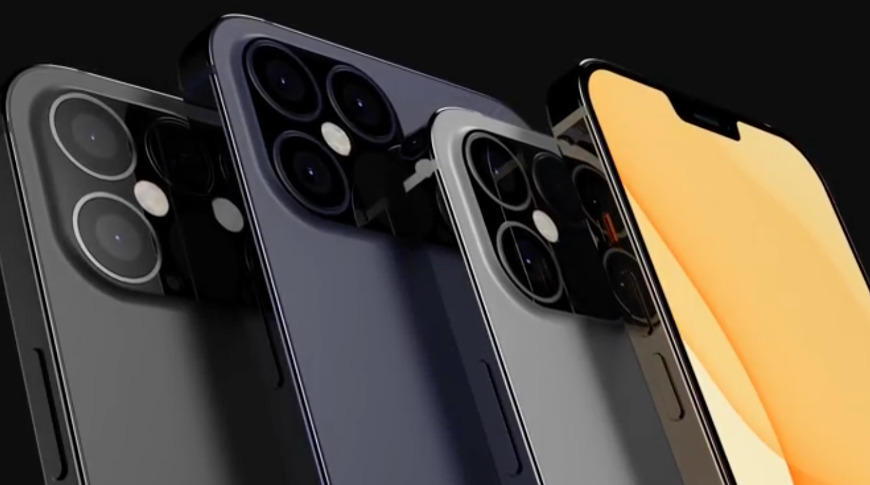A prolific Android leaker has chimed in on the "iPhone 12 Pro" and is expecting at least some of the new models to have a 120Hz ProMotion display.
Previous rumors about the fall 2020 iPhone refresh have pointed to Apple offering up to four models, spread across standard "iPhone 12" and higher-level "iPhone 12 Pro" tiers, with differing display sizes and other features. What has varied, is if the device will have a ProMotion display refreshing at 120Hz, or not.
A new rumor, published on Friday, suggests that the technology will be included in the fall in the "Pro" level phones.
A reliable source, if there is no accident, iPhone 12 Pro and iPhone 12 Pro Max have basically determined the maximum 120Hz refresh rate.
— Ice universe (@UniverseIce) June 26, 2020
Apple is expected to offer two "iPhone 12" models and two "Pro" versions, with one of each being a larger "Max" variant. The standard tier is said to have 5.4-inch and 6.1-inch OLED displays made by BOE, while the Pro models reportedly have 6.1-inch and 6.7-inch screens made by Samsung and will feature a 10-bit color depth.
| iPhone 12 | iPhone 12 Max | iPhone 12 Pro | iPhone 12 Pro Max | |
|---|---|---|---|---|
| Display | 5.4-inch BOE OLED Super Retina | 6.1-inch BOE OLED Super Retina | 6.1-inch Samsung OLED Super Retina XDR with ProMotion and 10-bit Color Depth | 6.7-inch Samsung OLED Super Retina XDR with ProMotion and 10-bit Color Depth |
| Memory | 4GB | 4GB | 6GB | 6GB |
| Storage | 128GB, 256GB | 128GB, 256GB | 128GB, 256GB, 512GB | 128GB, 256GB, 512GB |
| Body | Aluminum | Aluminum | Stainless Steel | Stainless Steel |
| Rear Cameras | Dual camera | Dual camera | Triple camera + LiDAR | Triple camera + LiDAR |
| Pricing | $649, $749 | $749, $849 | $999, $1,099, $1,299 | $1,099, $1,199, $1,399 |
The Pro models are expected to have 6GB of application RAM, versus the non-Pro models having 4GB. The Pro versions allegedly have a stainless steel body versus an aluminum body, while the usual triple camera setup on the Pro will also have LiDAR, whereas the non-Pro will have a dual-camera arrangement.
The "iPhone 12" is predicted to cost $649 for the 128GB-capacity version, rising to $749 for 256GB, and the Max version is said to cost $749 and $849 for each respective capacity.
For reference, the current iPhone 11 range starts from $699, indicating the "iPhone 12" will be cheaper at launch by $50. The iPhone 11 Pro and Pro Max start from $999 and $1,099, so there seems to be little movement on price for the higher-specification 2020 models.
Previous reports have postulated that the "iPhone 12" would have the 120Hz ProMotion display. There is reportedly internal conflict over inclusion, and it is likely to ship with the feature supported, but whether it will be enabled will depend on battery life.
Friday's report comes from a source with a long track record on Android devices, including within Samsung's supply chain, which notably. supplies the OLED iPhones for Apple. This appears to be the first Apple-related leak from the source.
 Mike Wuerthele
Mike Wuerthele







-m.jpg)






 Marko Zivkovic
Marko Zivkovic

 Christine McKee
Christine McKee
 Amber Neely
Amber Neely
 Sponsored Content
Sponsored Content
 Wesley Hilliard
Wesley Hilliard

 William Gallagher
William Gallagher









21 Comments
My guess: iPhone 11 stays in the lineup at $549. XR also at $449. SE gets lowered to $349
These price points could really drive UNIT share, which Apple has been reluctant to do so far
Could be a real game changer vs Android
iPhone 11 will continue champion among Phone buyers. iPhone 12 line is well thought through with price vs features. Customers will reward with purchases.